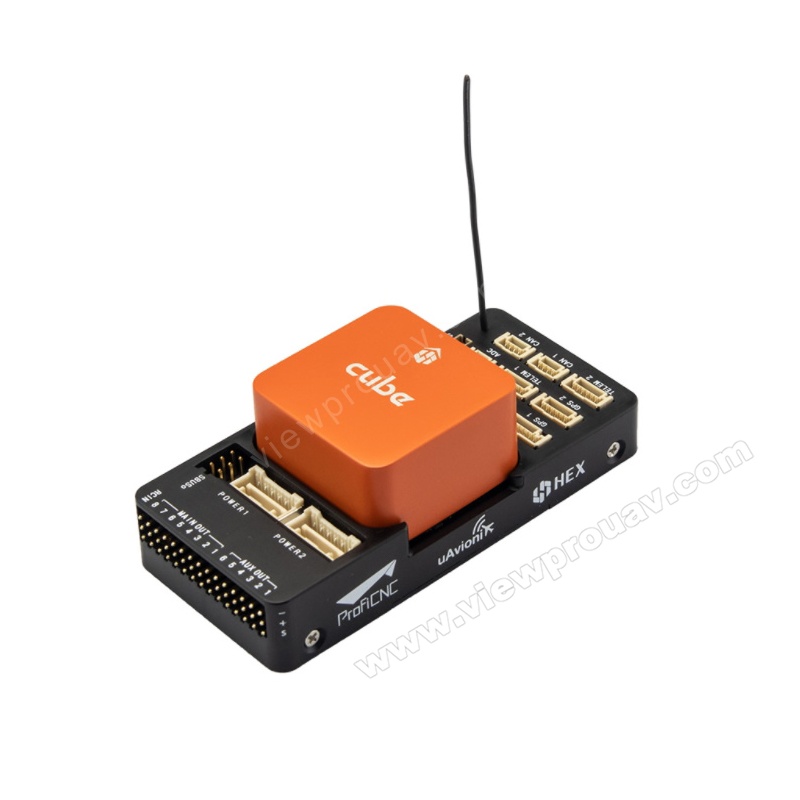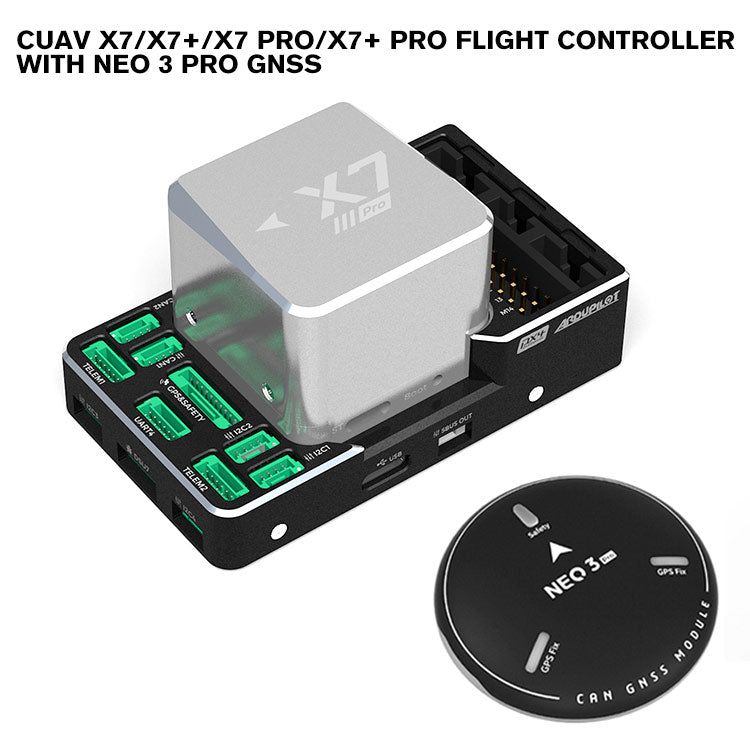Unmatched Precision: SparkNavi Drone Flight Controller and GNSS/INS Made in Taiwan
Unmatched Precision: SparkNavi Drone Flight Controller and GNSS/INS Made in Taiwan
Blog Article
The Importance of Drone Trip Controllers in Modern Aerial Innovation: Trick Elements and Their Impact
In the realm of modern-day aerial innovation, drone trip controllers offer as the pivotal systems that coordinate a drone's performance and capabilities. As markets significantly count on drones for applications ranging from agriculture to monitoring, the progressing innovation within flight controllers elevates important concerns about their future impact and prospective innovations.

Introduction of Drone Flight Controllers
In the world of airborne technology, drone trip controllers act as the important mind of unmanned aerial cars (UAVs), enabling precise ability to move and security throughout flight. These sophisticated systems integrate sensing unit data, processing formulas, and control inputs, allowing drones to carry out complex flight patterns with precision.
Drone trip controllers utilize different sensing units, such as gyroscopes, accelerometers, and GPS components, to assess the UAV's alignment and placement in real-time. This details is necessary for maintaining balance and making sure secure operation in varied environmental conditions. The controllers process this information to make instantaneous modifications to the drone's motors, enabling smooth transitions and responsive handling.
In addition, flight controllers are geared up with innovative software application that supports features such as waypoint navigating, barrier evasion, and autonomous trip abilities. This software program is important for both business and entertainment applications, where integrity and accuracy are extremely important. As drone technology proceeds to development, the advancement of flight controllers will play a critical function in improving UAV performance, safety, and convenience, eventually expanding their applications across numerous sectors.
Secret Parts Explained
Understanding the fundamental parts of drone trip controllers is crucial for understanding how these systems run properly. At the heart of a trip controller is the microcontroller, which functions as the mind, refining information from different sensors and executing commands. Vital sensors consist of gyroscopes and accelerometers, which determine the drone's orientation and activity, giving critical feedback for stablizing.
Another trick component is the barometer, which determines elevation by gauging climatic stress, while general practitioner modules supply positional data, enabling autonomous navigating - SparkNavi drone flight controller and GNSS/INS made in taiwan. The trip controller additionally interfaces with Digital Speed Controllers (ESCs), which manage the speed of the drone's electric motors based on the controller's commands
Interaction modules, such as radio receivers, help with push-button control input, allowing operators to send out commands in real-time. Furthermore, some flight controllers integrate software that can handle intricate algorithms for waypoint navigating, flight preparation, and telemetry information analysis.
Duty in Flight Security
Central to preserving flight security, drone flight controllers make use of advanced algorithms to process sensing unit information and make real-time changes. These controllers are equipped with a selection of sensors, consisting of accelerometers, barometers, and gyroscopes, which continually check the drone's alignment, speed, and altitude. By interpreting this data, the trip controller can determine discrepancies from the desired flight path and respond immediately to preserve stability.
As an example, if a drone experiences an unexpected gust of wind, the trip controller can rapidly readjust the motor speeds to combat the disruption, making certain a steady flight trajectory. This capability is crucial not only for hand-operated flight operations but also for implementing intricate maneuvers and maintaining smooth trip in numerous environmental problems.
.png)
Additionally, the advanced algorithms utilized in trip controllers, such as PID (Proportional-Integral-Derivative) control, allow for fine-tuning of the drone's action to changes in trip problems. By optimizing these control specifications, trip controllers can improve stability, boost responsiveness, and decrease pilot workload. Eventually, the role of flight controllers in making certain trip security is crucial for the efficient and risk-free procedure of modern drones throughout varied applications.
Effect on Autonomous Workflow

Independent procedures are particularly essential in diverse applications such as delivery, monitoring, and agriculture solutions. With enhanced flight controllers, drones can autonomously browse predetermined paths, effectively gather data, and adapt to vibrant settings. This capability decreases the demand for consistent human oversight, therefore raising functional effectiveness and security.
Additionally, the application of device knowing methods within flight controllers enables drones to boost their efficiency with time by picking up from previous objectives. This flexibility leads the way for more sophisticated autonomous applications, such as throng innovation, where several drones collaborate their activities to accomplish a typical objective.
Future Trends in Flight Controllers
Technologies in flight controller technology are positioned to revolutionize drone capacities in the coming years. One considerable trend is the integration of artificial knowledge (AI) and artificial intelligence formulas, making it possible for drones to gain from their atmospheres and make real-time choices. This advancement will improve autonomous navigation, challenge avoidance, and goal planning, considerably improving functional effectiveness and safety.
In addition, the growth of innovative sensor innovations, such as LiDAR and multispectral imaging, will provide trip controllers with richer data inputs. This will assist in much more sophisticated logical capacities, enabling drones to carry out complex tasks, such as accuracy rescue, search and farming, click here now and infrastructure inspections with extraordinary accuracy.
An additional arising trend is the miniaturization of flight controller parts, which will lead to lighter and a lot more compact drones. This evolution will extend trip periods and payload abilities, making drones a lot more functional for various applications.
Final Thought
In verdict, drone flight controllers function as vital components in modern aerial modern technology, making sure stability and accuracy in ability to move with the combination of microcontrollers, accelerometers, and GPS components. SparkNavi drone flight controller and GNSS/INS made in taiwan. Their capability to enable autonomous procedures and adapt to various applications underscores their importance throughout numerous markets. As innovations in synthetic knowledge and sensing unit modern technology proceed to arise, the capacity for improved abilities and boosted functional performance in drone systems will likely reshape the future of aerial applications
Central to maintaining flight stability, drone trip controllers use sophisticated formulas to his comment is here refine sensor data and make real-time changes. By translating this information, the flight controller can recognize deviations from the desired trip course and react without delay to maintain security.
Moreover, the sophisticated formulas made use of in trip controllers, such as PID (Proportional-Integral-Derivative) control, enable for fine-tuning of the drone's feedback to adjustments in flight problems. Ultimately, the role of flight controllers in ensuring trip stability is vital for the efficient and risk-free procedure of contemporary drones throughout varied applications.
The developments in drone flight controllers not just boost trip security yet additionally dramatically influence autonomous procedures. SparkNavi drone flight controller and GNSS/INS made in taiwan.
Report this page